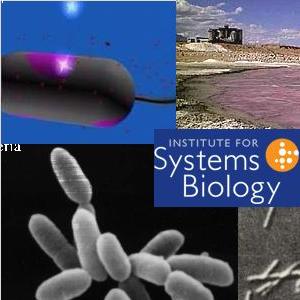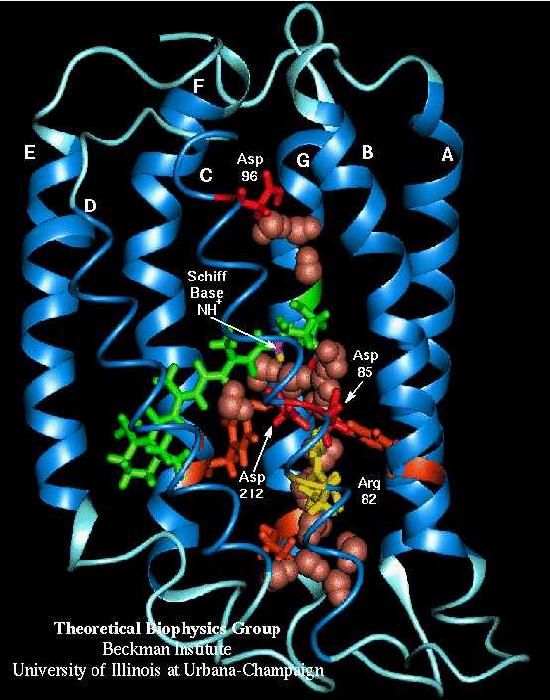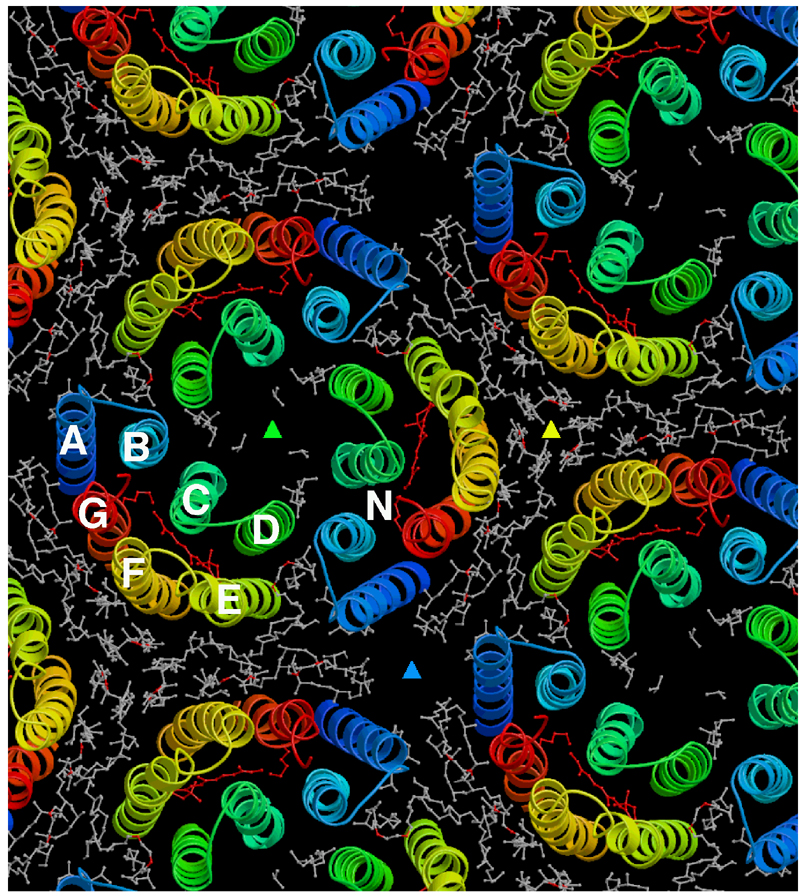|
|
|
HALOBACTERIUM sp.
The ocean may be blue, but the saltier
bodies of water have a different a story. Some salt marshes
and lakes (the Dead Sea, Owens Lake, and the Great Salt Lake, to name a
few) can be seen emitting a purplish-pink tint. Why are the waters
running purple? A mysterious
resident known as Halobacterium sp.
This free-living, unicellular microorganism
flourishes in saturated salt solutions under intense solar radiation. Halobacterium sp., an archaeon, has
a unique ability to survive under both aerobic and anaerobic conditions.
Under anaerobic conditions, when oxygen isn't
available for ATP generation, the bacteria forms a purple membrane.
The main component of the purple membrane, Bacteriorhodopsin,
keeps Halobactium sp.'s life
cycle going in this time of famine by funtioning as an energy
transducer.
|

| Halobacteria has
an ability to change its color as its environmental conditions change -
as does this website: Pinkify! |
|
|
BACTERIORHODOPSIN
 Bacteriorhodopsin (BR) is a light-driven
ion pump which converts light energy into electrochemistry energy.
BR, the main component of Halobacterium's purple membrane, is a
seven-helical transmembrane protein with a retinal co-factor. In
the presence of sunlight, BR moves protons out of the Halobacterium
cell, creating a proton gradient. This proton gradient, in turn,
is used by ATP synthase, a second membrane protein, to generate chemical
energy in the form of ATP. Bacteriorhodopsin (BR) is a light-driven
ion pump which converts light energy into electrochemistry energy.
BR, the main component of Halobacterium's purple membrane, is a
seven-helical transmembrane protein with a retinal co-factor. In
the presence of sunlight, BR moves protons out of the Halobacterium
cell, creating a proton gradient. This proton gradient, in turn,
is used by ATP synthase, a second membrane protein, to generate chemical
energy in the form of ATP.
|
 |
|
|


 Institute for Systems Biology
Institute for Systems Biology